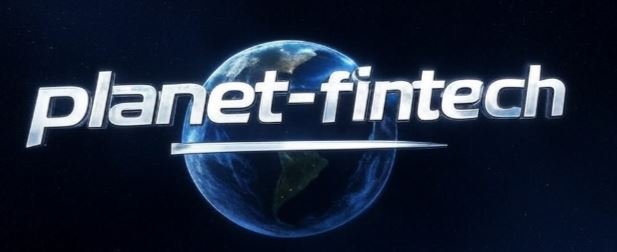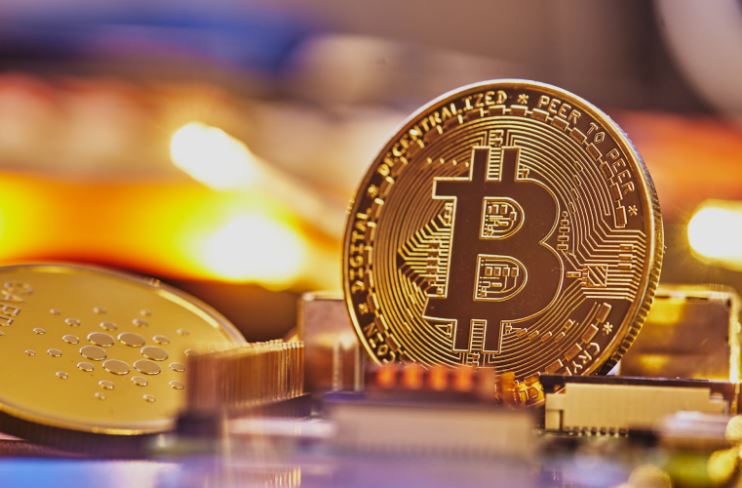The cryptoasset market is continuously witnessing the introduction of new tokens, with meme coins soaring in popularity recently.
Notably, Bitcoin (BTC), the flagship cryptocurrency network, has joined the meme coin trend through the Runes protocol and BRC-20 token standard. Like Ordinal inscriptions, which allow NFTs to live on Bitcoin, Runes is a new token standard or framework that streamlines the creation of fungible tokens on Bitcoin.
With the Runes protocol, Bitcoin enthusiasts can develop and trade meme coins on the Bitcoin blockchain. Read on to learn more about meme coins on Bitcoin and discover some leading examples. proficator.app
Memecoins are simply cryptocurrencies created to capture internet trends and memes. Notably, meme coins are highly volatile, which means they can be very profitable or bring heavy losses.
Dogecoin (DOGE)’s successful launch using the DRC-20 token standard paved the way for numerous meme coins today. Following Dogecoin’s introduction, other networks created similar frameworks to accommodate meme coins.
Meme coins are designed to follow a similar trend as internet memes, going viral as more people adopt and share them.
To get started, all you need is access to a platform that supports these coins and a wallet for securely storing Ordinals and Bitcoin meme coins.
Bitcoin Runes is a new protocol that enables users to create and manage fungible tokens. Notably, Runes was introduced after the fourth Bitcoin halving in April 2024, or the event that once again reduced the supply of new BTC by half.
Bitcoin Runes was proposed by developer Casey Rodarmor, the brain behind the Ordinals protocol that allows the minting and transferring of NFTs on Bitcoin. While BRC-20 also supports the minting and transfer of fungible tokens on Bitcoin, its operation differs entirely from runes.
The existing BRC-20 token standard utilizes the Ordinals theory and is notorious for clogging the network with so-called “junk” UTXOs (unspent transaction outputs) and, thereby increasing fees for Bitcoin users.
Runes was created to solve the downsides of the BRC-20 standard and improve user experience. It uses Bitcoin’s UTXO to store data on-chain, inheriting Bitcoin’s security and reducing bug risks.
While Runes works with the existing Bitcoin framework, it is also compatible with the Lightning Network, a layer-2 network of Bitcoin. This gives runes an edge over the BRC-20 framework as users can access faster and cheaper transactions with runes while interacting with the Bitcoin network.
Comparatively, BRC-20 is more expensive for creating and managing meme coins on Bitcoin than with the Runes protocol.
Lots of meme coins currently exist on Bitcoin. However, these four are making bigger waves in the crypto space.
ORDI (BRC-20)
ORDI is the pioneer BRC-20 token developed on the Bitcoin blockchain. It relies on the Ordinals protocol.
Unlike ERC-20 tokens that rely on smart contracts, BRC-20 tokens such as ORDI are inscribed into a satoshi. These inscriptions are not limited to texts and can also be audio, video, or even games, which opens up numerous possibilities.
DOG•GO•TO•THE•MOON (Runes)
Launched on April 24, 2024, DOG•GO•TO•THE•MOON managed to surpass a market capitalization of $ 600 million. The dog-themed meme coin is among the top runes tokens in terms of market capitalization and trading volume.
Notably, it conducted a massive airdrop event, during which 100 billion tokens were distributed to over 75,000 holders of Runestone Ordinal NFTs.
RSIC•GENESIS•RUNE (Runes)
RUNECOIN, or RSIC, is the first pre-Runes token that was airdropped and handed over to the early adopters of the Ordinals protocol. Its 21 billion token supply seems to be inspired by Bitcoin’s supply cap. RSIC was minted on the Runes protocol and is another meme coin with massive community support.
While there are several meme coins on Runes, it still holds a special place and is quite popular due to the airdrop.
WZRD (BRC-20)
Bitcoin Wizards is an Ordinal NFT project created by developer mavensbot to celebrate the tenth anniversary of the original Bitcoin Wizard meme.
The same developer is also the creator of Magic Internet Money, a legendary advertisement promoting Bitcoin. It grew to become one of the most popular Bitcoin ads on the Reddit platform. Therefore, the project has enjoyed success based on community hype, common for meme coins.
Many new meme coins have popped up, and the ongoing market rally will encourage even more projects. With the BRC-20 and Runes standards, Bitcoin has joined Ethereum in setting the stage for numerous meme coins.
The BRC-20 and Runes framework effectively supports the transfer of fungible tokens Bitcoin. However, Runes is designed to be more efficient than BRC-20.
These developments in Bitcoin have also influenced its price gains in the current market cycle. So, Bitcoin, among other things, is now also becoming an ecosystem for meme coins.
Notably, Bitcoin (BTC), the flagship cryptocurrency network, has joined the meme coin trend through the Runes protocol and BRC-20 token standard. Like Ordinal inscriptions, which allow NFTs to live on Bitcoin, Runes is a new token standard or framework that streamlines the creation of fungible tokens on Bitcoin.
With the Runes protocol, Bitcoin enthusiasts can develop and trade meme coins on the Bitcoin blockchain. Read on to learn more about meme coins on Bitcoin and discover some leading examples. proficator.app
What Are Meme Coins?
Memecoins are simply cryptocurrencies created to capture internet trends and memes. Notably, meme coins are highly volatile, which means they can be very profitable or bring heavy losses.
Dogecoin (DOGE)’s successful launch using the DRC-20 token standard paved the way for numerous meme coins today. Following Dogecoin’s introduction, other networks created similar frameworks to accommodate meme coins.
Meme coins are designed to follow a similar trend as internet memes, going viral as more people adopt and share them.
To get started, all you need is access to a platform that supports these coins and a wallet for securely storing Ordinals and Bitcoin meme coins.
Understanding How Runes Work on Bitcoin
Bitcoin Runes is a new protocol that enables users to create and manage fungible tokens. Notably, Runes was introduced after the fourth Bitcoin halving in April 2024, or the event that once again reduced the supply of new BTC by half.
Bitcoin Runes was proposed by developer Casey Rodarmor, the brain behind the Ordinals protocol that allows the minting and transferring of NFTs on Bitcoin. While BRC-20 also supports the minting and transfer of fungible tokens on Bitcoin, its operation differs entirely from runes.
The existing BRC-20 token standard utilizes the Ordinals theory and is notorious for clogging the network with so-called “junk” UTXOs (unspent transaction outputs) and, thereby increasing fees for Bitcoin users.
Runes was created to solve the downsides of the BRC-20 standard and improve user experience. It uses Bitcoin’s UTXO to store data on-chain, inheriting Bitcoin’s security and reducing bug risks.
While Runes works with the existing Bitcoin framework, it is also compatible with the Lightning Network, a layer-2 network of Bitcoin. This gives runes an edge over the BRC-20 framework as users can access faster and cheaper transactions with runes while interacting with the Bitcoin network.
Comparatively, BRC-20 is more expensive for creating and managing meme coins on Bitcoin than with the Runes protocol.
Leading Meme Coins on Bitcoin
Lots of meme coins currently exist on Bitcoin. However, these four are making bigger waves in the crypto space.
ORDI (BRC-20)
ORDI is the pioneer BRC-20 token developed on the Bitcoin blockchain. It relies on the Ordinals protocol.
Unlike ERC-20 tokens that rely on smart contracts, BRC-20 tokens such as ORDI are inscribed into a satoshi. These inscriptions are not limited to texts and can also be audio, video, or even games, which opens up numerous possibilities.
DOG•GO•TO•THE•MOON (Runes)
Launched on April 24, 2024, DOG•GO•TO•THE•MOON managed to surpass a market capitalization of $ 600 million. The dog-themed meme coin is among the top runes tokens in terms of market capitalization and trading volume.
Notably, it conducted a massive airdrop event, during which 100 billion tokens were distributed to over 75,000 holders of Runestone Ordinal NFTs.
RSIC•GENESIS•RUNE (Runes)
RUNECOIN, or RSIC, is the first pre-Runes token that was airdropped and handed over to the early adopters of the Ordinals protocol. Its 21 billion token supply seems to be inspired by Bitcoin’s supply cap. RSIC was minted on the Runes protocol and is another meme coin with massive community support.
While there are several meme coins on Runes, it still holds a special place and is quite popular due to the airdrop.
WZRD (BRC-20)
Bitcoin Wizards is an Ordinal NFT project created by developer mavensbot to celebrate the tenth anniversary of the original Bitcoin Wizard meme.
The same developer is also the creator of Magic Internet Money, a legendary advertisement promoting Bitcoin. It grew to become one of the most popular Bitcoin ads on the Reddit platform. Therefore, the project has enjoyed success based on community hype, common for meme coins.
Final Word
Many new meme coins have popped up, and the ongoing market rally will encourage even more projects. With the BRC-20 and Runes standards, Bitcoin has joined Ethereum in setting the stage for numerous meme coins.
The BRC-20 and Runes framework effectively supports the transfer of fungible tokens Bitcoin. However, Runes is designed to be more efficient than BRC-20.
These developments in Bitcoin have also influenced its price gains in the current market cycle. So, Bitcoin, among other things, is now also becoming an ecosystem for meme coins.

 Actus AssurTech / InsurTech
Actus AssurTech / InsurTech



